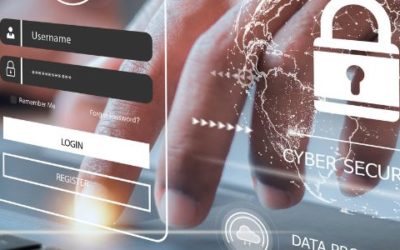What Form of MFA Should Your Company Be Using? Most Secure vs. Most Convenient
Credential theft has skyrocketed and is responsible for more data breaches than any other form of attack. With more data and business processes moving to the cloud, obtaining an individual’s password is often the quickest and easiest way to conduct malicious activities.
Suppose a bad actor is granted access to an account (especially with admin access). In this case, they will be able to do terrible things. They can send phishing emails from your company account to your employees and customers or even infect your entire cloud data with ransomware.
So, how can you protect your data, online accounts, and business operations from hackers? One of the best ways to enhance security is by utilizing multi-factor authentication or MFA within your organization.
MFA provides a significant barrier to cybercrime even if bad actors have a legitimate user credential to log in. This is because they typically won’t have access to the device receiving the MFA code required for the complete authentication process.
Different Types Of MFA To Consider
When implementing multi-factor authentication at your business, it’s essential to compare the different options and not just assume all methods of MFA are the same. There are three main methods of MFA, and key differences make some more secure and some more convenient than others.
SMS-Based
This form of MFA is one that people are most familiar with. It uses a text message to authenticate and grant account access to the user. When setting up this method of MFA, the user typically enters their mobile number. Then, when logging into their account, they will receive a text with a time-sensitive code that must be entered for authentication.
On-device App Authenticator
Another type of MFA uses an app to push through the code for login approval. The user will still generate the code at log in, but instead of receiving it via SMS, it’s obtained through the authenticator app.
This type of MFA is usually done via a push notification with a mobile app or desktop app.
Security Key
The third key method of MFA uses a separate physical security key that can be inserted into a PC or mobile device for login access. This key is purchased when the MFA solution is set up and will be the object that receives the code, implementing it automatically.
The MFA security key is usually smaller than a traditional thumb drive, and the user must carry it to authenticate when logging into a system.
Now that we’ve discussed the three main types of MFA let’s examine their differences.
MFA main differences
 Most Convenient Form Of MFA
Most Convenient Form Of MFA
Some users may feel like MFA slows them down. However, this can worsen if they must learn to use a new app or try to remember a tiny security key that can be easily misplaced or lost.
This user inconvenience may cause businesses to leave their cloud accounts less secure by not using MFA at all.
If your organization faces user pushback, the most convenient form of MFA is SMS-based.
Since most individuals are already accustomed to getting text messages on their phones, there is no new learning interface or app that needs to be installed.
 The Most Secure Type of MFA
The Most Secure Type of MFA
If your company handles sensitive data in the cloud, such as your online accounting solution, it’s probably best to use the MFA process offering the most security.
The security key is the most secure form of MFA since it is a separate device altogether. This means it won’t leave your accounts unprotected if a mobile phone is lost or stolen. The SMS-based and app-based versions leave your accounts at risk in this scenario.
The SMS-based MFA is the least secure because there is malware available that can clone a SIM card, allowing a hacker to receive the MFA code text messages.
 What’s in the Middle?
What’s in the Middle?
So, where does the app with an on-device prompt fit in for convenience and security? Well, right in the middle of the other two MFA methods.
An MFA authenticator app that delivers the code via push notification is more secure than the SMS-based MFA. It’s also more convenient than carrying a separate security key that could quickly become misplaced or lost.
MFA main differences
Need Help Setting Up Multi-factor Authentication At Your Company?
MFA is an essential security solution in today’s constantly evolving threat landscape. With MFA enforced, you’ll be able to strengthen your security posture and protect your business from cybercriminals’ most used method of attack— credential theft.
Contact our security experts to discuss your company’s barrier points and we’ll devise a solution to keep your cloud database more secure and safeguarded from hackers.
Set up the most suitable MFA process for you and your employees today
You might also like
The 5 Symptoms of Bad I.T. Plaguing Your Business
Welcome to the Network Computer Pros technology clinic, where we diagnose and treat the I.T....
IT Billing Model: 6 Major Benefits of Fixed-Rate Services
Managed IT Services offer significant advantages over traditional hourly billing for businesses in...
Latest LastPass Scam: Everything you should know
Understanding and Protecting Yourself from the Latest LastPass Scam After a sophisticated...



